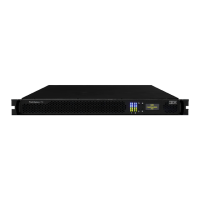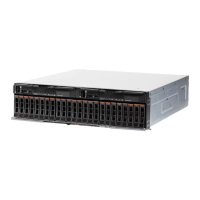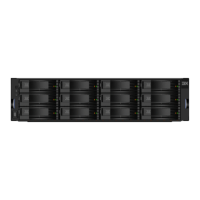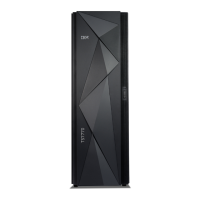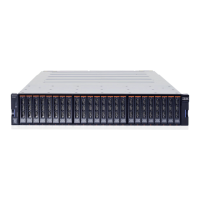Table 5. Supported expansion enclosures (continued)
Enclosure (MTM) Description Enclosure height
2072-24G / 2072-F24 24-slot expansion enclosure for 2.5-inch drives 2U
2072-92G / 2072-F92 92-slot expansion enclosure for 2.5-inch or
3.5-inch drives
5U
Figure 2 on page 3 shows an example of a FlashSystem 5000 system as a traditional RAID storage
system. The internal drives are congured into arrays. Volumes are created from those arrays.
Figure 2. Example of the system as a RAID storage system
The two node canisters are known as an I/O group. The node canisters are responsible for serving I/O on
the volumes. Because a volume is served by both node canisters, no availability is lost if one node
canister fails or is taken offline. The Asymmetric Logical Unit Access (ALUA) features of SCSI are used to
disable the I/O for a node before it is taken offline or when a volume cannot be accessed through that
node.
System management
Each control enclosure contains two node canisters. Together, the system nodes canisters operate as a
single system. System management and error reporting are provided through an Ethernet interface to one
of the nodes in the system, which is called the conguration node. The conguration node runs a web
server and provides a command-line interface (CLI). The conguration node is a role that either node can
take. If the current conguration node fails, the other node becomes the conguration node. Each node
also provides a command-line interface and web interface for servicing hardware.
Fabric types
I/O operations between hosts and system nodes and between the system nodes and RAID storage
systems use the SCSI standard. The system nodes communicate with each other by using private SCSI
commands.
Table 6 on page 3 shows the fabric types that can be used for communicating between hosts, nodes,
and RAID storage systems. All installed fabric types can be used at the same time.
Table 6. System communications types
Communications
type
Host to system node System node to storage system
Fibre Channel SAN Yes, using an optional 4-port 16 Gbps Fibre
Channel host interface adapter.
Yes, using an optional Fibre Channel
host interface adapter
Chapter 1. System overview 3
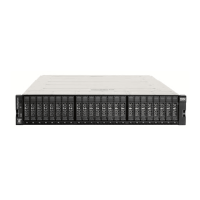
